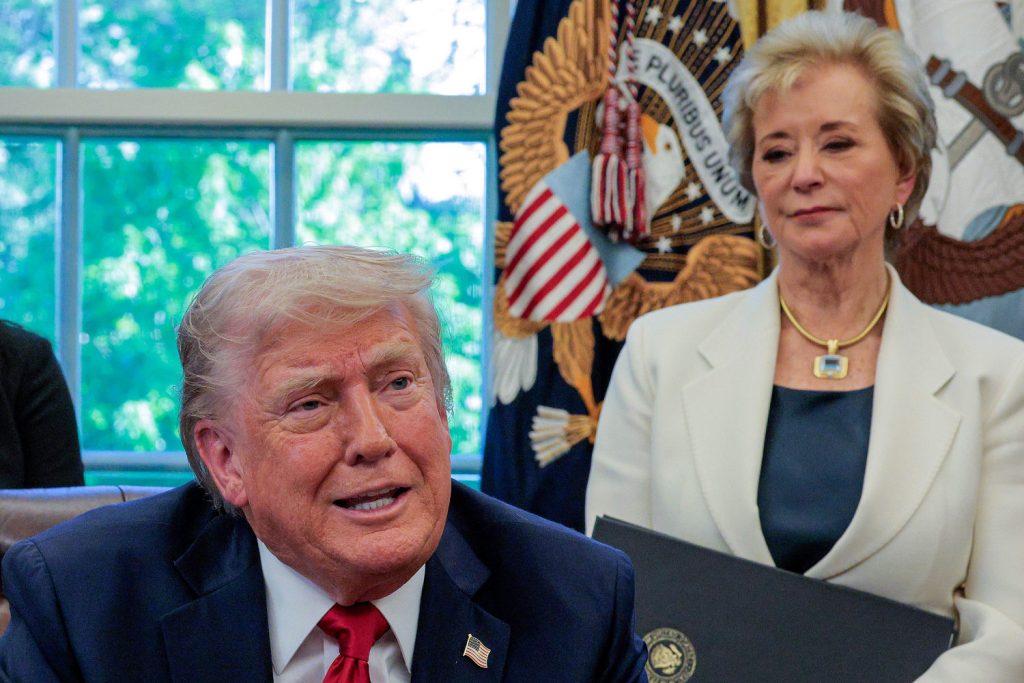
In May 2025, the U.S. Department of Education, under President Donald Trump, restarted collections on defaulted student loans. For the first time in five years, borrowers who missed payments face wage garnishment, seized tax refunds, or Social Security cuts.
This follows a pause in March 2020 due to the COVID-19 pandemic. “Borrowers should pay back their debts,” said Education Secretary Linda McMahon on X on April 22. According to Bank of America, the move aims to recover part of the $1.6 trillion student loan debt, which grew by $500 billion in the last decade.
JPMorgan estimates collections could reduce disposable personal income by $3.1 billion to $8.5 billion monthly. This depends on interest rates and repayment plans. In a single quarter, defaulted and seriously delinquent loans could cut 0.7% to 1.8% from yearly disposable income, said Murat Tasci, a senior JPMorgan economist.
Low-income and subprime borrowers, already struggling, will face the most brutal hit. “This will knock on broader consumer finances, especially for the subprime segment,” wrote Bank of America analyst Mihir Bhatia.
The New York Fed says 25% of borrowers required to pay are behind, with 8% of loans delinquent in Q1 2025, up from 0.5% last quarter.
The policy adds pressure on consumers who are already strained by Trump’s tariffs and inflation. According to JPMorgan, tariffs, including a 10% global rate, could raise prices by 1-1.5%.
This could push disposable income growth negative in mid-2025, raising recession risks. Consumer sentiment, tracked by the University of Michigan, hit historic lows in early 2025. “You have rising pressure points,” said LPL Financial’s chief economist Jeffrey Roach. “In aggregate, it’s enough to quash spending.” Borrowers face credit score drops of up to 129 points, per VantageScore, or 171 points, per the Federal Reserve. This makes it harder to rent, buy homes, or get jobs.
Student loans are 9% of consumer debt but 30% when excluding mortgages, per Bank of America. With 5.3 million borrowers in default and 4 million in late-stage delinquency, collections could affect nearly 25% of loans if delinquencies worsen. Part of the reason people add to credit card debt is student loan payments.
“That’s the spillover effect,” said Ted Rossman of Bankrate. The New York Fed warns of risks to other debts, like credit cards, as borrowers struggle. Social media posts on X show alarm, with one user noting a 150-point credit score drop after payments spiked. Another said their payment quadrupled to $900.
Not all experts see a significant economic hit.
Roach argues that high-income earners drive most spending and will keep the economy afloat. “The student loan story is not as important as other stories,” he said. Trump’s proposed tax cuts on overtime and tips might ease some pain for low-income borrowers.
However, JPMorgan initially forecasted a 60% chance of a recession due to tariffs, though it later dropped below 50% after tariff reductions. Bank of America’s Brian Moynihan sees no recession, but Wells Fargo notes stress among lower-income consumers. The economy’s fate depends on consumer spending amid rising prices and a 4.8% unemployment peak projected for 2026.
The Trump administration’s push contrasts with Biden’s relief-focused approach. Biden’s SAVE plan, which capped payments at 5% of income, is blocked in court. Current plans can charge up to 20%, hitting 8 million borrowers hard. The Education Department is laying off staff, complicating loan management.
Borrowers can seek forbearance or income-driven plans to avoid default, but options are limited. “It’s short-term pain but brings certainty,” said economist Michael Jones. Critics, like the Community Service Society of New York, call it “brutal” amid tariff-driven price hikes and layoffs. With 42 million Americans owing student debt, the policy’s impact will shape consumer finances and economic stability.

